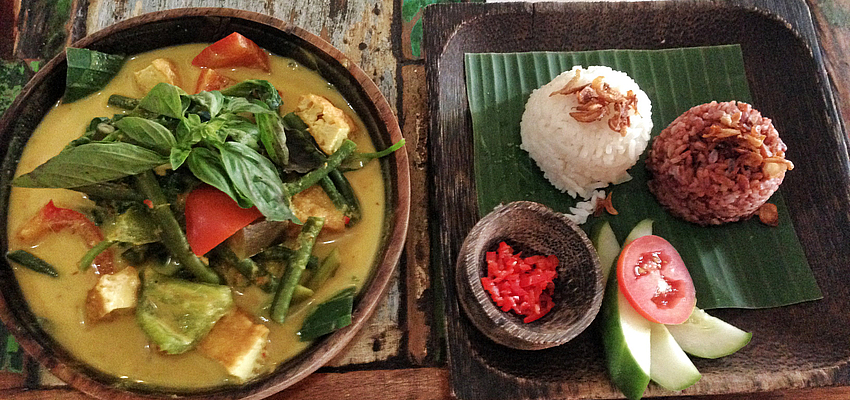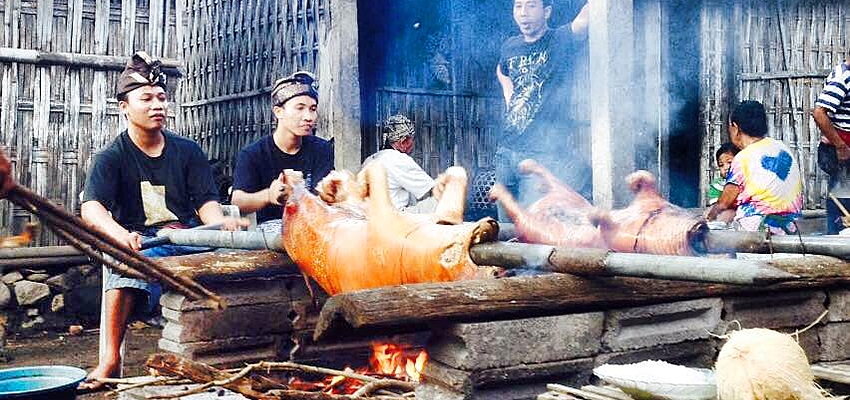


A little guide to what to expect from Balinese cuisine before you try it!
Bali is a unique island with a strong cultural identity. Its cuisine has lots of specialties. For example, the Balinese love babi guling (spit roasted suckling pig) a celebration dish whose preparation involves the whole village and which has the added advantage of confirming their Hindu identity in the mainly Muslim Indonesia In Bali cooking is definitely social and spiritual, and marked by different traditions in different regions.

The Balinese soil is rich and fertile and everything grows in it, so their varied cuisine is based around a variety of fruits, vegetables and spices. They also raise a wide range of animals: ducks, pigs, chickens, and goats in the different regions.
Rice is the great unifying element - there is nearly always rice. It is grown in Bali and steamed. It is of a very high quality and is almost sacred to the Balinese.
Well, not like normal because traditionally on the Island of Gods there are no tables. They don't use plates or cutlery either, but don't worry, you will be offfered them. The Balinese eat with their right hand, everyone serving themselves direct from the main dish. The Balinese eat fairly quickly and don't usually talk much during their meals. But mealtime is still a family time.
You are sitting in a warung (a small, traditional restaurant) with the menu in your hands, and you are lost. Which is understandable because the menus aren't always in English and you can't guess what the Balinese might be. It would be a shame not to try the following dishes though:
Don't expect cheese, it's not something that is part of the Balinese tradition. There aren't many puddings either but it would be a pity not to try some of the tasty tropical fruit. Jackfruit, salak, rambutan, avocado, mango and fresh coconut - you can find them in the markets or on little stalls by the side of the roads and they are delicious and cheap.
You could do your bit for the local economy by taking a hamper home with you! Salt from the east coast, especially from Amed, Balinese chilis, "kopi luwak ", coconut oil and a few packets of peanuts will help keep your journey alive in your cooking!